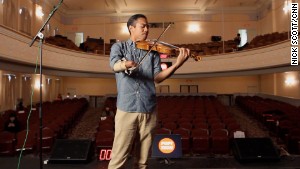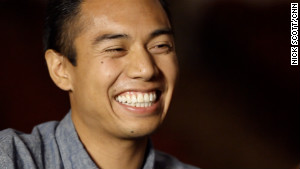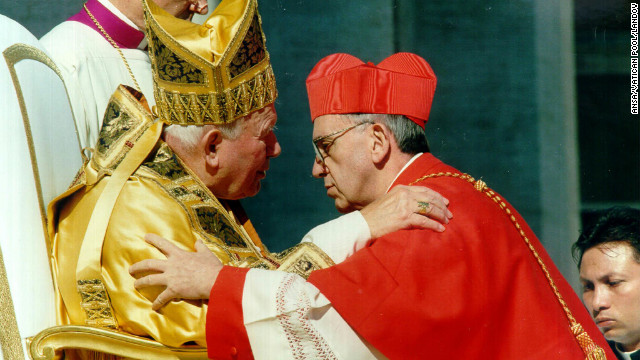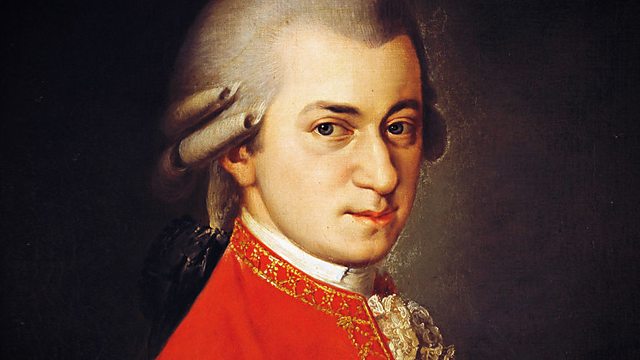One-handed Violinist Helps The Disabled Make Music
Monday, March 18, 2013
0
comments
{[["☆","★"]]}

The young man tucks his violin under his chin and begins to play. A
hush falls over the few spectators in the largely empty opera house, who
turn toward the bare stage. As his lilting notes float through the
room, other people trickle in from the lobby to listen.
The young man sometimes
closes his eyes as he plays, as if lost in the music. If his audience
closed their eyes, too, they would never know the violinist standing
before them has no right hand, only a stunted appendage with tiny stubs
instead of fingers.
Which is fitting, because Adrian Anantawan prefers to be judged for what people hear, not what they see.
At 28, Anantawan is one
of the world's most accomplished young violinists. He has performed at
the White House, at the Vancouver Winter Olympics, for Pope John Paul
II, for Christopher Reeve and most recently for the Dalai Lama during a private recital at MIT. Anantawan played a piece by Bach, and when he finished, the Tibetan Buddhist leader approached him.
"He put my hands
together, and put his hands around mine, and our foreheads touched for
six or seven seconds," Anantawan said. "And I'm just thinking to myself,
'My goodness, where has this instrument and music taken me?' I feel
tremendously blessed to have had experiences like that."
Anantawan's disability
has been with him since birth. Doctors think the umbilical cord wrapped
around his hand in the womb, cutting off the blood supply and keeping it
from growing properly. To compensate, he uses a simple prosthesis
called a spatula, which grips the violin bow.

Anantawan on the stage of the Camden Opera House in Camden, Maine, where he spoke at the PopTech conference.
In recent years,
Anantawan has devoted his career to using adaptive technology -- from
prosthetic devices like his own to sophisticated computer software -- to
aid aspiring young musicians in overcoming a wide range of
disabilities. By helping them make music, he believes this technology
can help "reveal the inner humanity" of disabled children who struggle
to express themselves through other means.
"Accessibility is not an act of charity," Adrian told an audience last summer during a TEDx talk in suburban Boston, where he is now an orchestra conductor at a charter school.
"It's one of lifting the ceiling of potential development so that all
children can explore this world, but also possibly create new ones."
A 'sonic fingerprint'
Born of Thai-Chinese
ethnicity, Anantawan grew up in Toronto. With only one hand, many
childhood milestones -- learning to tie shoes, sharpen a pencil in
class, ride a bike -- were difficult for him. Classmates made him feel
different.
"Growing up without an
arm -- it seems trivial now, but when you're in grade one or two, kids
can exclude you on many different levels," he said during an interview
last fall at the annual PopTech conference in this picturesque Maine seaside town.
By the time he was 9,
his parents decided he should learn a musical instrument. The recorder
was out, because it's difficult to adapt for two hands. The trumpet was
too loud, and so were the drums. Little Adrian didn't have much of a
singing voice. So his mother decided on the violin.
His parents took the
instrument to a rehabilitation center, where they adapt prosthetics to
meet the needs of disabled children. A few months later, engineers there
produced a customized device out of plaster, aluminum and Velcro
straps. Eighteen years later, he's still wearing the same one.
"Little did my parents
know that they had invited a dying cat into their home for the first six
months in the form of 'Twinkle, Twinkle, Little Star,' " said Anantawan
in the TEDx talk, squeaking out the melody on his violin.
For a boy with one hand, music became a great equalizer. Suddenly, he could do something the same way as his classmates.
"I had this adaptation.
It did look different. But what came out, in terms of the sound from the
instrument, was exactly the same as theirs. And we were all trying to
make music together," Anantawan said. "Music was my way of sharing my
personality with the world. I was very shy. I didn't talk very much. And
the instrument, and playing music, helped me come out of my shell."
Adrian learned quickly.
In some ways, he was easy to teach, because instructors didn't have to
worry about his right-hand technique -- just his left hand and fingers,
which press down on the strings of the violin to produce different
notes, pitch, tone and so on.
I've had to really think, because there's no manual to (learn to) play with one hand.
Adrian Anantawan
Anantawan's educational
pedigree is impressive. He graduated from Philadelphia's prestigious
Curtis Institute of Music and earned a master's degree from Yale. During
two summers he studied under his boyhood idol, renowned violinist
Itzhak Perlman, at his residency program in Shelter Island, New York.
For Anantawan, the key to playing music is merging technique with personal expression to produce something genuine and unique.
"You're thinking, 'What
do I want to express?' and then your body finds a way to do it. That
happens with everyone," he said. "But for me, it's more explicit. I've
had to really think, because there's no manual to (learn to) play with
one hand."
As a student and a
professional, Adrian has performed as a soloist with orchestras
throughout his native Canada, at New York's Carnegie Hall and with
violinist Anne-Sophie Mutter on a European tour.
He, and others, believe
his disability produces a unique sound. Because Adrian's right arm is
shorter than that of most people, he draws the bow of his violin across
the strings at unusual angles -- not consistently perpendicular to the
strings, as most violinists do.
"With the violin, the
way that you're built physically influences to a very high degree how
you sound. I'm not able to use my entire bow, for instance," Anantawan
said. "So therefore I put more pressure on my bow to put more weight
onto the string and produce more sound. "It gives me a bit of a sonic
fingerprint."
But Anantawan's lack of a right hand hasn't limited his ability to play at a world-class level.
"There's no music he
can't play, as far as I can tell," said Professor Lee Bartel, associate
dean at the University of Toronto, who is himself a violinist. "There
are no limitations with this disability. He has fully adapted it."
Bartel has heard
Anantawan play a variety of repertoire in different contexts and scoffs
at any notion that he's gained recognition as a musician because people
feel sorry for him or see him as a novelty.
"There's no doubt he is exceptionally talented," he said. "He is a star performer."
Giving back

Anantawan says he's happiest playing music or working with children, who seem to relate to his boyish demeanor. With his place in the classical music world secure, Anantawan now wants to focus on helping others like him.
He was inspired in part by a visit years ago to Toronto's Holland Bloorview Kids Rehabilitation Hospital, which built his prosthetic. There Anantawan was introduced to a device, called a Virtual Music Instrument, that translates movement into sound.
Like a motion-controlled
video gaming system, the Virtual Music Instrument employs a camera that
is mounted on a computer screen and aimed at someone, capturing their
gestures. The Virtual Music Instrument software is designed to play
prerecorded musical samples when the person waves a hand or tilts their
head, activating symbols on the screen.
Intrigued, Anantawan
applied for a grant from Yale and gathered a team of doctors, musicians,
music therapists and educators to explore the device's potential. He
began working with a young musician, Eric Wan, who was forced to give up
the violin after a neurological disorder paralyzed him from the neck
down. The project concluded with Wan using the Virtual Music Instrument,
guided by movements of his head, to play Pachelbel's "Canon in D"
during a 2011 concert with the Montreal Chamber Orchestra.
"I had been playing the violin for about eight years before I got paralyzed," said Wan in a YouTube video about the performance. "I really didn't think I was able to play an instrument again. It's an incredible feeling."
Anantawan has been back
to Holland Bloorview several times to give concerts and talk to the
young patients. As an icebreaker, he always passes his prosthesis around
the room so the kids can handle it up close.
"There's a silence that
falls upon the room as the kids watch him play," said Tom Chau, vice
president for research at Holland Bloorview, and who developed the
Virtual Music Instrument. "He's a great role model for our clientele.
They can see, down the road, the possibilities (that exist for them)."
It's not just children
who have been inspired by Anantawan. He was once approached by an Iraq
war veteran who had lost an arm. After seeing Anantawan play in a video
online, the man made a crude prosthetic device out of cardboard and took
up the violin.
"In most of these
stories, it's never about the technique or technology that is important,
but the desire to live life authentically and creatively. We often
forget even 'traditional' musical instruments are technological
adaptations in their own right -- they are tools to manipulate sound in a
way that we couldn't do with our bodies alone," said Anantawan, who earned a second master's degree last year, this time from Harvard's Graduate School of Education.
"To say that your example has changed some life along the way for the better -- I'm extremely humbled to be a part of that."
Today, Anantawan
combines classroom teaching with the drier but no less important task of
developing arts curricula for kids with special needs -- not just
physical disabilities, but cerebral palsy, Down syndrome and other
conditions. He hopes someday to implement educational practices, working
with devices such as the Virtual Music Instrument, that can be adopted
by other schools around the globe.
"It's a lot easier to
start from the bottom up than the top down," he said. "You have to
understand where these kids are coming from, and the nature of their
disability. I was extremely lucky to find the right instrument and
adaptation and the right medium. But in public education, you don't want
luck to be a factor."
Anantawan said he's
happiest playing music or working with children, who seem to relate to
his boyish look and soft-spoken demeanor. It gives him profound
satisfaction to help open doors for kids, to help them hear their own
voice.
"The reward (for me)
comes on many levels, but perhaps the most rewarding comes in the form
of those few seconds that a child is creating something musically
unique, a voice that demands our attention," he said.
"In terms of stories,
I'm sure that at some point the children I've worked with will have
their own. But I've always found that they have touched my life in a far
deeper way than anything that I've given them."
THANK YOU FOR YOUR VISIT, PLEASE COME BACK SOON...
Title: One-handed Violinist Helps The Disabled Make Music
Written By Kristofani
Hopefully this article useful to you. If you wish to quote either part or all of the contents of this article, please include dofollow links to http://kristianporung.blogspot.com/2013/03/one-handed-violinist-helps-disabled.html. Thank you for reading this article.Written By Kristofani




















0 comments:
Post a Comment